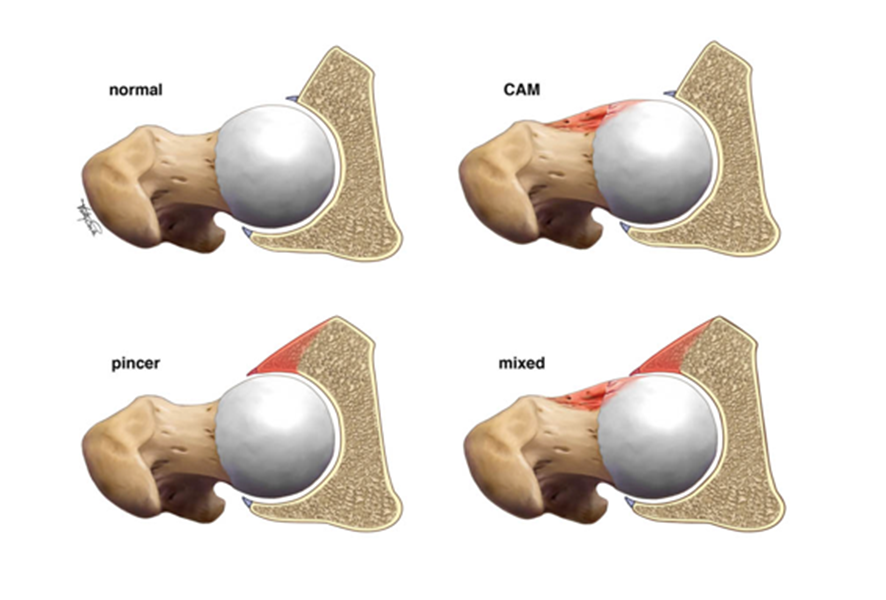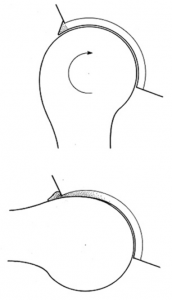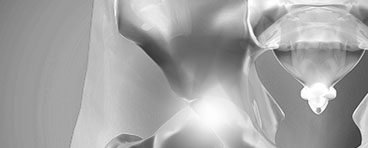Click on the links below to find out more
Femoroacetabular Impingement (FAI)
DESCRIPTION
In FAI, abnormal bone develops around either the ball or the socket of the hip joint. This extra bone causes abnormal contact between the hip bones, and prevents them from moving smoothly during activity. Over time, this can result in tears of the labrum and breakdown of articular cartilage (osteoarthritis).
CONDITION
Pincer
This type of impingement occurs because extra bone extends out over the normal rim of the acetabulum. The labrum can be crushed under the prominent rim of the acetabulum.
Cam
In cam impingement the femoral head is not round and cannot rotate smoothly inside the acetabulum. A bump forms on the edge of the femoral head that grinds the cartilage inside the acetabulum.
Mixed
Combined impingement means that both the pincer and cam types are present.

There are three types of FAI: pincer, cam, and combined impingement.
Cause
FAI occurs because the hip bones do not form normally during the childhood growing years. It may be caused by repetitive overuse during adolescence, due to chronic growth plate irritation causing abnormal bone growth around the hip. It is the deformity of a cam bone spur, pincer bone spur, or both that leads to joint damage and pain. When the hip bones are shaped abnormally, there is little that can be done to prevent FAI.
It is not known how many people have FAI. Some people may live long, active lives with FAI and never have problems. When symptoms develop, however, it usually indicates that there is damage to the cartilage or labrum and the disease is likely to progress.
Because athletic people may work the hip joint more vigorously, they may begin to experience pain earlier than those who are less active.
Symptoms
The most common symptoms of FAI include:
- Pain
- Stiffness
- Limping
- Clicking/catching
Pain often occurs in the groin area, although it may occur toward the outside of the hip. Turning, twisting, and squatting may cause a sharp, stabbing pain. Sometimes, the pain is just a dull ache.

CAM Type FAI: The oval shaped femoral head causes ‘peeling’ damage to the labrum and hip cartilage

Pincer Type FAI-The Deeper hip socket squashes and damages the hip cartilage (Beck CORR 2004)







